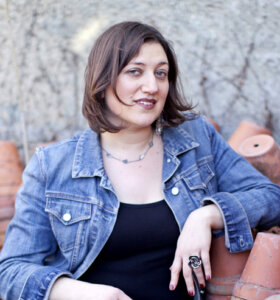So, How Do You Observe Shabbat In Reykjavik?

Reykjavik, Iceland Image by Getty Images
Shabbat lasts three days in Reykjavik, Iceland, as I discovered when I found myself there for a writing conference. Shabbat began at 11:16 p.m. on Friday night, according to Chabad’s ever-helpful online calendar that lists candle-lighting times around the world, and finally ended at 1:27 on Sunday morning. Travelers to Iceland in summer often remark on the light; at midnight, it feels like ten in the morning because the sun is still out and the sky is still blue. But what is an only-in-Iceland bonus to the bar-hopper and live-music lover is also a major hassle for the Shabbat observer.
How to survive?
I found myself boiling eggs at ten p.m. on a Friday night at my Airbnb, and making coffee that I put in the fridge to drink cold the next day. There isn’t much kosher food in Iceland, though the Dunkin’ Donuts sells bagels and lox. While eating eggs and sipping coffee on Shabbat, I read the local English-language alternative newspaper, The Reyjkavik Grapevine, which describes itself as covering “life, travel, and entertainment” in Iceland.
I was surprised and delighted to come across a piece titled “L’Chaim on Laugavegur” by Hannah Jane Cohen. Laugavegur is the main drag of Reykjavik, and the central thoroughfare for tourists. The piece, decorated by Magen David symbols, details Cohen’s experience as a Jewish woman in Iceland. “Before meeting me, most if not all of my friends had never met a Jew,” Cohen writes.
“Therefore, when individually each friend found out about my biblical birthright, it felt like Christmas,” Cohen writes. “OH MY GOD! I HAVE NEVER MET A JEW! TELL ME EVERYTHING!” they would cry. Phrases like “bat mitzvah” and “shalom” elicited whoops of glee.”
Cohen details how what she had been embarrassed about for years was suddenly cool in mostly homogenous Iceland, which has a mere 330,000 residents.
“Being Jewish became a factor of my personality that people knew. For instance, when I walked into BlazRoca’s concert last Friday, he yelled from the stage, “It’s Hannah Jane! My favorite Jew!” Mazel tov me.”
And Shabbat shalom. After Shabbat, I went on a tour of one of Iceland’s magnificent parks and the guide explained that there is a group of professors charged with coming up with new words in Icelandic to avoid depending on transliterated English. “Sometimes they have good ideas,” he said, “like when they used the word for fortune-teller to describe a computer.”
As the guide explained that the law insists on Icelandic names, and that those who diverge from the book of names must apply for permission to do so, I thought of the parallels between the movement to revive the Hebrew language and the Icelandic determination to preserve Icelandic. Both cultures share a commitment to language and history, and both face a constant struggle to make an old language spoken by a limited number of speakers relevant, alive, contemporary, tech-inclusive, and well, cool.
But the language is not free of bias. Cohen explains that she “reclaimed and happily adopted” the racist term for Jew in Icelandic.
I was sad to realize that the near-total absence of Jews in Iceland had not prevented this word from entering the language, which so many here clearly treasure.
Aviya Kushner is The Forward’s language columnist and the author of The Grammar of God (Spiegel & Grau). Follow her on Twitter @AviyaKushner

















